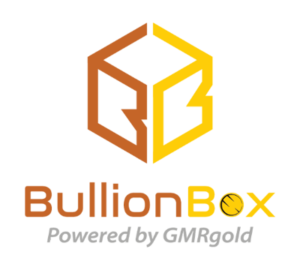More people are talking about bullion these days, and many are rushing to invest in it. If you are considering joining them, the first thing you need to know is exactly what bullion is. The following information will help you understand the meaning of this term. Even better, it might help you decide whether to take the plunge!
Bullion Defined
Understanding bullion begins with a precise definition. First, bullion refers to physical precious metals products with a high degree of purity. Furthermore, all bullion is produced specifically to be used for investment purposes rather than as a form of currency. It can come in several forms, weights and metals. The main thing to remember is that bullion is a type of precious metals valued for its content rather than its form.
Forms of Bullion?
What shape is bullion? That depends on what form of bullion you choose. The following types are available:
- Poured bars
- Pressed bars (also known as ingots)
- Rounds
- Coins
Bullion in Poured Bars and Ingots
Often, when people think of bullion, they think of gold bars. In fact, in Fort Knox, Kentucky, where 147.3 million ounces of gold are stored, most of the gold is in the form of bars. So, bullion bars do play an important role in investment and reserves.
There are two types of bullion bars: poured bars and pressed bars. The latter are also called ingots. The two types of bars are produced differently, as their names suggest. The result is that pressed bars are shinier and have crisp edges and details. Poured bars have softer edges and may have some mild imperfections on their surface. The bottom line, though, is that both types of bars have the same value.
Bullion Rounds
Bullion rounds are round pieces of precious metals, the same shape as coins. However, if they have a design, it is usually stamped more lightly than on coins. Bullion rounds are produced in private mints. Rounds are called generic precious metals because it is only their content that makes them valuable and not their form at all.
Bullion Coins
Bullion coins are produced in government mints and have a distinctive design stamped on them. These coins are struck from very pure precious metals. Their weight and purity are shown clearly to aid in determining their value. Bullion coins, unlike bullion rounds, have high-quality designs. In recent times, governments have added marks of authenticity to bullion coins.
Precious Metals Used in Bullion
The two most common precious metals used in bullion are gold and silver. However, other metals are sometimes used. You might find bullion bars, ingots, rounds, and coins made from any of the following precious metals:
Bullion Weights
Bullion comes in various weights, measured in troy ounces. For example, a standard gold bar has a weight of 400 troy ounces, which is 27.4 pounds. Still, you can get gold bars in many different sizes, including fractions of one troy ounce. Gold coins and gold rounds usually weigh one or fewer troy ounces. For reference, one troy ounce is equal to 1.09714 standard ounces, so it is almost 10% heavier.
Is Bullion Legal Tender?
Bullion may or may not be legal tender. What is legal tender? Basically, if you owe someone a debt and offer to pay it off using something that is legal tender, then they can’t sue you for failure to pay.
Bullion coins are legal tender if they are made by an official mint and stamped with a design that includes a year and a face value backed by the government. However, bullion coins are not commonly circulated but instead kept as investments.
As for gold bars, these may be considered legal tender in certain states, including Louisiana, Texas, and Utah. Precious metals rounds are not legal tender.
In any case, you typically would not use bullion to pay for things in the same way you would use cash. However, if a time of severe economic crisis came, many people likely would prefer to trade using precious metals.
Cost and Value of Bullion
Anyone wishing to invest in bullion would likely be concerned about the cost and value of these precious metals. How much does it cost to buy it, and how much will it be worth in the future? The best way to answer these questions might be to speak with a precious metals expert. However, there are a few things to keep in mind.
Bullion vs. Numismatic Coin
Bullion is valued differently from numismatic coins. Bullion’s worth is determined entirely or almost entirely by its content. If you know the current spot price of the precious metal, you know that your bullion should be worth about the same price per troy ounce.
However, you need a lot more information to know the value of a numismatic coin. These collectible coins may be worth more or less, depending on several factors:
- history
- rarity
- design
- mint state grade
- striking errors
- year
If you decide to invest in collectible coins, you definitely need to consult with someone who knows the market, history, and design features of the ones you are considering for purchase.
What’s more, it’s hard to keep up with the changes in the demand for specific collectible coins. Tastes change, and other factors influence both the demand and supply. With bullion, you only need to take a quick look at the precious metals market report to see where its value stands today.
What about Premiums?
When you purchase precious metals, you typically pay a premium on top of the spot price. Premiums on bullion are based on five main factors:
- the supply and demand for that bullion
- economic conditions on the global, national, and local levels
- the amount of bullion included in the transaction
- the type of bullion product
- what the seller wants to achieve
Premiums for numismatic coins can be quite high. On the other hand, if you are buying bullion bars or rounds, you should pay a much lower premium. Bullion coins minted by official government mints fall somewhere between the two.
Once you understand what bullion is, you can begin to see the benefits of investing in this type of precious metals product. Then, you can learn more by talking to a knowledgeable precious metals advisor to make the best investment decision for you.

 with 700+ reviews
with 700+ reviews



